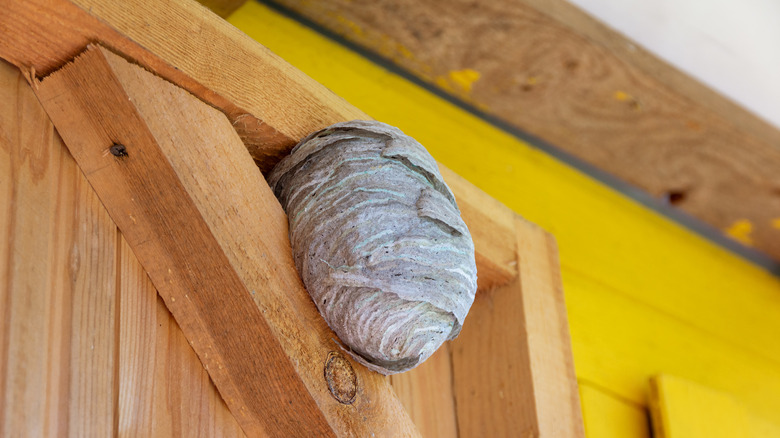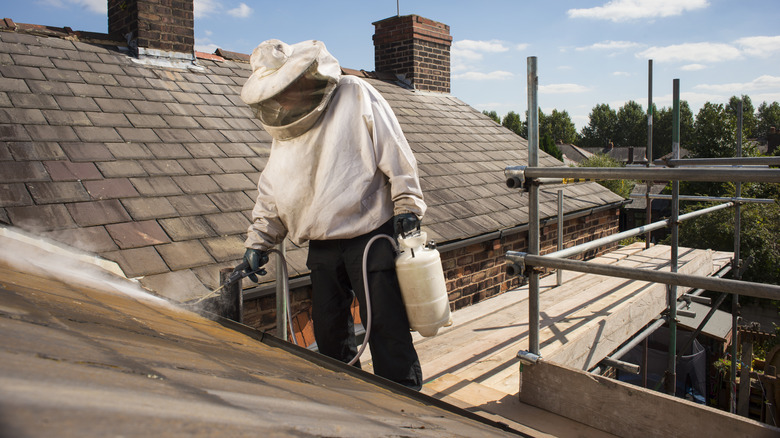What Is The Right Time Of Day To Eliminate A Wasp Nest
If there's a flying insect to fear, it's the dreaded wasp. While environmental benefits can be gained from these buzzing bugs, they also pose a serious stinging risk for whoever dares to disturb their area. If you're planning to eliminate this threat, prepare for an early morning or even nighttime assault.
Timing your approach with the rising and falling of the sun is due to a wasp's schedule. Most wasps spend their daylight hours away from the nest searching for food or scouting out new locations for their next home. They come in to rest and maintain the hive in the evening and then stay there until the next day's dawn. If you're going to undertake the risky task of eliminating a nest, you might as well take out as many inhabitants as possible.
Caution and preparation are key when ridding your area of a wasp nest, though. The most common of these nuisances, yellow jackets, hornets, and paper wasps, are all classified as social insects. That means their nests are filled to the brim, and much of that colony will attack when threatened. Mud daubers are sometimes confused with wasps, but they're actually solitary insects. They pose no real threat to mammals, human or otherwise. Instead, mud daubers are a great spider deterrent, and their nests should only be removed once they've moved out and a rounded hole is left behind. This will keep other, possibly more dangerous, insects from claiming a free home.
Timing your wasp removal tactics
Wasps are like us after a long day of work. They want to come home, kick back, and relax. While some inside the hive may continue performing internal maintenance on the abode overnight, most will become still. This is when their sleep cycle occurs, and it's why attacking and removing the nest in the evening or early morning hours is ideal. The wasps will certainly stir awake when the bug spray, smoke, or water comes rushing inside, but their movements will be slowed, giving you more time to get out of harm's way.
Plenty of brave souls will be ready and willing to take on this task, but it's important to know when to call in professionals. Even small nests can hold hundreds of wasps, so there's a real danger going against an overgrown den. A good rule of thumb is to bring in the experts when the nest is bigger than a baseball or if it's built in an area that's hard to access. If you have to crawl across an attic or climb a ladder to reach the nest, your means of escape become severely limited while your threat level becomes extremely high. And no, destroying the nest while they're out during the day is not a workaround. Wasps build new nests every year, so tearing down their current residence will just hurry up their construction on a new one. You want to eliminate the wasps themselves to avoid repeating history.

